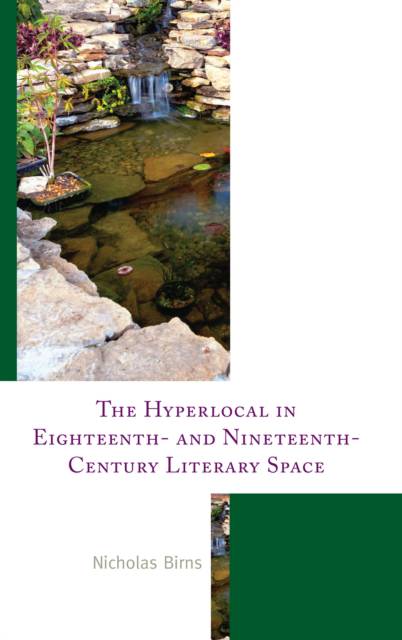
Door een staking bij bpost kan je online bestelling op dit moment iets langer onderweg zijn dan voorzien. Dringend iets nodig? Onze winkels ontvangen jou met open armen!
- Afhalen na 1 uur in een winkel met voorraad
- Gratis thuislevering in België vanaf € 30
- Ruim aanbod met 7 miljoen producten
Door een staking bij bpost kan je online bestelling op dit moment iets langer onderweg zijn dan voorzien. Dringend iets nodig? Onze winkels ontvangen jou met open armen!
- Afhalen na 1 uur in een winkel met voorraad
- Gratis thuislevering in België vanaf € 30
- Ruim aanbod met 7 miljoen producten
Zoeken
The Hyperlocal in Eighteenth- and Nineteenth-Century Literary Space
Nicholas Birns
Hardcover | Engels
€ 198,45
+ 396 punten
Omschrijving
This book examines literary representations of hyperlocal spaces that subvert the idea of grounded and organic spatial identities. Figures such as the pond, the scientific particle, and Wedgwood creamware often go unnoticed, but they exemplify important shifts in culture and aesthetics in the eighteenth and nineteenth centuries. The Hyperlocal in Eighteenth- and Nineteenth-Century Literary Space argues that these objects, as well as locations such as alcoves in remote shires, city inns, and mountain retreats, were portrayed by writers in the late eighteenth and early-to-mid nineteenth centuries as gambits that challenged cultural hegemonies. It shows that the hyperlocal space or object, though particular, reaches beyond itself, affording an elasticity that can allow those things that seem beneath notice to reveal broader cultural significance.
Specificaties
Betrokkenen
- Auteur(s):
- Uitgeverij:
Inhoud
- Aantal bladzijden:
- 250
- Taal:
- Engels
Eigenschappen
- Productcode (EAN):
- 9781498599528
- Verschijningsdatum:
- 26/08/2019
- Uitvoering:
- Hardcover
- Formaat:
- Genaaid
- Afmetingen:
- 152 mm x 229 mm
- Gewicht:
- 535 g

Alleen bij Standaard Boekhandel
+ 396 punten op je klantenkaart van Standaard Boekhandel
Beoordelingen
We publiceren alleen reviews die voldoen aan de voorwaarden voor reviews. Bekijk onze voorwaarden voor reviews.











